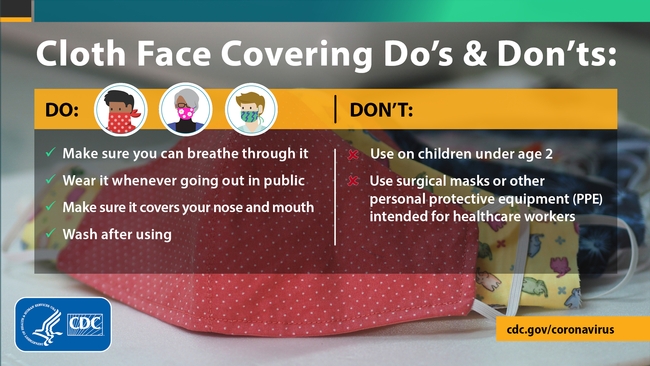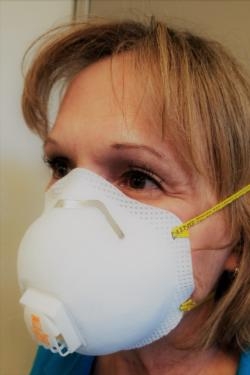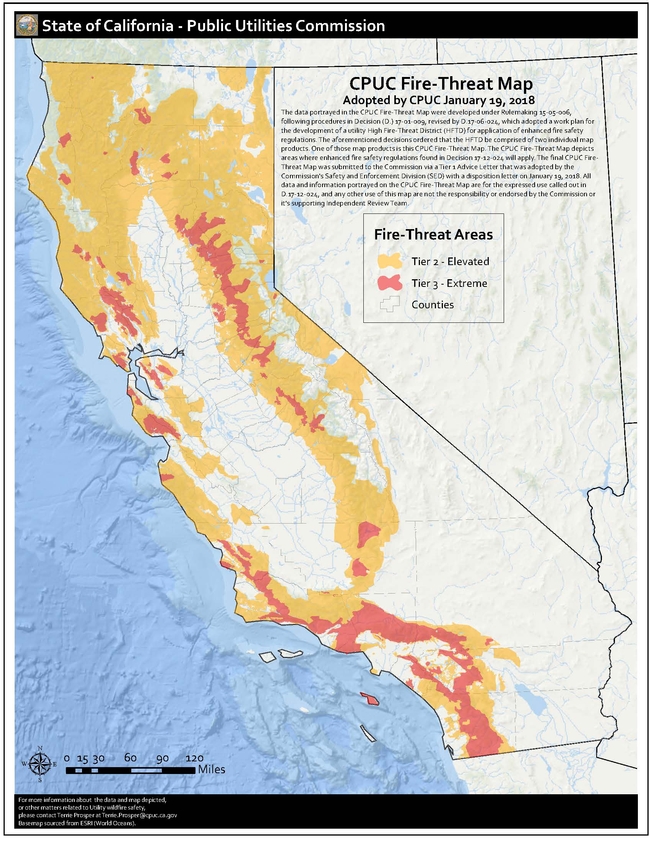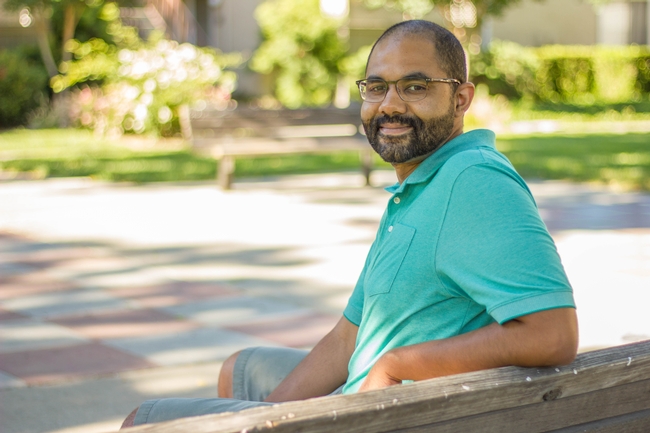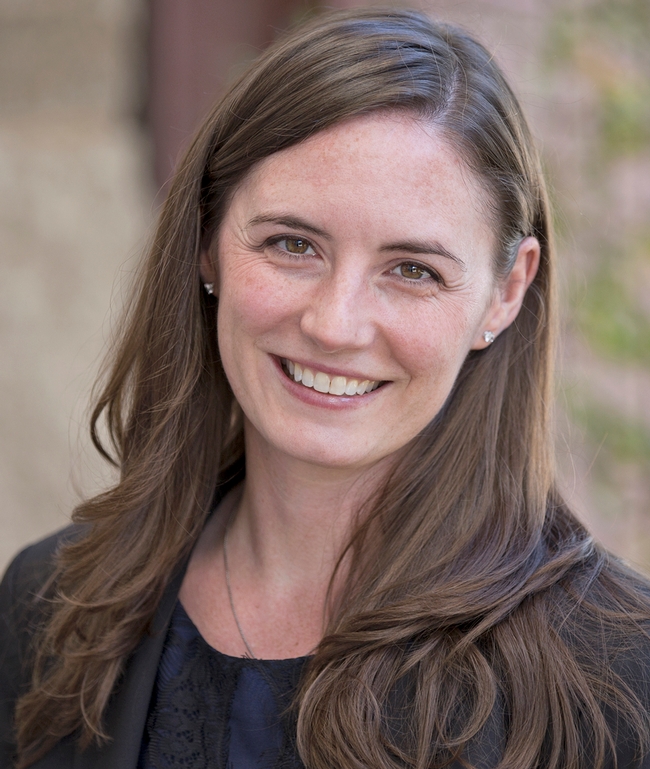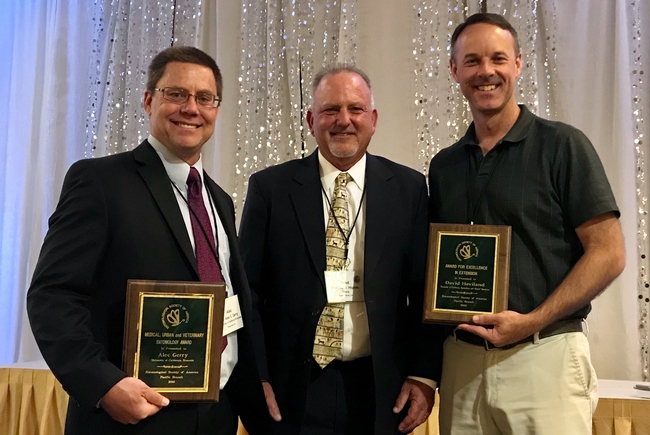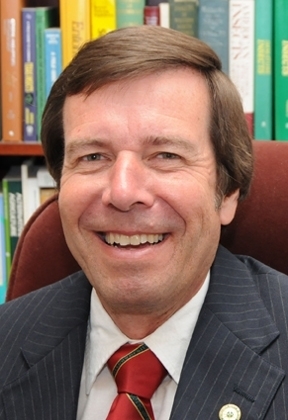Posts Tagged: Risk
Safety standards set for resuming in-person activities
Some county health authorities have begun to modify local shelter-at-home orders for COVID-19 and relax restrictions on low-risk activities. To ensure that we continue to protect the health and safety of our people and our communities, UC ANR has developed UC ANR Safety Standards for Resuming In-Person Activity, Stage 2 to outline protocols for our programs and work locations.
The safety standards are informed by state, county and UC best practices, and are intended to help UC Cooperative Extension directors, Research and Extension Center directors and statewide program leaders plan for the eventual resumption of some in-person activities.
For those counties that have authorized return to in-person activity under Stage 2, UC ANR directors are now required to document their plans for in-person work activity with the ANR Emergency Response team based on the safety standards. Local plans may vary from county to county, and may change over time to be more or less restrictive as the impact of reopening unfolds.
It is important to remember that the state is allowing for the resumption of limited onsite operations. UC ANR employees and volunteers who can still work or engage remotely should continue to do so until Governor Newsom completely lifts California's stay-at-home order and UC ANR advises it is appropriate to return to in-person operations.
ANR directors contributed to the development of ANR's safety standards, and we've asked them to help address questions and concerns and to reinforce the steps being taken to provide a safe working environment.
“Throughout this process, the safety and health of ANR's employees, volunteers and clientele are the top priority as we resume in-person activities,” said Brian Oatman, director of Risk & Safety Services.
In general, ANR will be taking a slow and deliberate approach to expanding in-person activities, and most of us will continue to work remotely for the immediate future.
Several questions about resuming in-person activities were answered during the ANR town hall meeting on May 28. A recording of that town hall will be posted at https://ucanr.edu/sites/anrstaff/All_Hands.
FAQs have been developed to address questions asked during the May 28 Town Hall meeting concerning safety measures related to COVID-19, budgetary impacts and more. Please visit http://ucanr.edu/sites/safety/files/327731.pdf to read the questions and answers.
For resources related to COVID-19, visit https://ucanr.edu/covid19.
New rules passed to protect workers from wildfire smoke: guidance available
Cal/OSHA recently passed an emergency regulation to establish standards to protect workers from the hazards of wildfire smoke. This standard has four primary requirements:
- Identify potential exposures to harmful air quality caused by wildfire smoke (i.e. monitor Air Quality Index (AQI) forecasts and daily levels during wildfire events).
- Communicate wildfire smoke hazards, air quality conditions, protective measures, and encourage feedback from employees.
- Train employees who are reasonably anticipated to be affected by unhealthy air quality caused by wildfire smoke.
- Control harmful exposure to outdoor workers by various methods as feasible. During unhealthy air quality events, these control measures may include working indoors in a building with filtered air, limiting the duration and intensity of outdoor work, or use of a filtering respirator when other means are not effective or practical to control exposure. The standard requires that when the AQI for PM2.5 reaches 151 or higher, the employer must make respirators available for employees to use if they must work outdoors.
UC ANR Risk & Safety Services has developed guidance and training on how to comply with this new regulation at http://ucanr.edu/protectfromwildfiresmoke as well as a PowerPoint training for safety coordinators to share with employees. Risk & Safety Services is also procuring respirators that will be shipped to all ANR locations.
“Since this is a brand-new regulation, we expect that additional guidance will come out from Cal/OSHA in the next few months,” said Brian Oatman, director of Risk & Safety Services.
In addition to this Cal/OSHA standard, a team from all UC campuses and ANR has been developing a decision matrix for guiding how UC locations will respond to unhealthy air quality due to wildfire smoke. This decision matrix will include various types of activities, such as outdoor workers, volunteers, athletics, camps, and youth activities. We will share this additional information as the decision matrix is finalized.
If you have questions about the new wildfire smoke rules, please contact Brian Oatman at (530) 750-1264 or baoatman@ucanr.edu.
Top 3 things to know about public safety power shutoff
To reduce the likelihood or severity of fire incidents during extreme weather or potential wildfire conditions, California has approved the Public Safety Power Shutoff Program allowing utility companies to turn off power as a preventive measure.
UC ANR Risk & Safety Services has prepared Safety Note #199 PUBLIC SAFETY POWER SHUTOFFS (PSPS) to provide tips and links to additional information.
Here are the three most important things to know about public safety power shutoffs:
1. The decision and action to turn off power is made by each energy company and is based on a combination of factors, including high winds, red flag warnings, low humidity, dry vegetation serving as fuel, fire/wind threat to electric infrastructure, on-the ground observations, and overall risk to public safety. Monitor these conditions in your immediate area and be prepared to act. Visit http://prepareforpowerdown.com to learn more. Additionally, the California Public Utilities Commission has posted maps of areas they have determined to have the greatest fire threat https://www.cpuc.ca.gov/FireThreatMaps/. You can review these maps to better understand the potential fire threat at your location and other locations that you visit for research, extension or other activities.
2. Sign up for alerts! Update your personal and office location contact information with your local energy company. You can do so by contacting the company, visiting their website, or by visiting http://prepareforpowerdown.com. If you are alerted of a possible shutdown, look for more detailed information from your utility company's website or social media accounts to better understand how the shutdown may affect you. A PSPS will usually affect a specific area or neighborhood, not an entire city or county. In some cases, the utility will post maps of the affected area.
3. If your office is closed or affected due to a PSPS or other emergency, directors or office managers should notify ANR Risk & Safety Services by contacting Brian Oatman (baoatman@ucanr.edu). If employees aren't able to work due to a natural disaster or emergency, ANR Human Resources (anrstaffpersonnel@ucanr.edu) should also be notified so that arrangements may be made to track and report employee leave time during the emergency.
Budget update: State funding unchanged for ANR in 2018-19
On June 22, Governor Jerry Brown signed the state budget for fiscal year 2018-19, which contains a new line item for UC ANR within the UCOP budget. UC ANR will have the same amount of funding from the state for the upcoming year as we had this year. While we appreciate that ANR did not suffer additional cuts, we still need to deal with unfunded obligations of $4 million to $5 million. This results from the UC system getting an increase of 3 percent in the coming fiscal year, which will cause increases in salaries and benefits.
We are managing this $4 million to $5 million in unfunded obligations in three ways:
- We are slowing down hiring of UC Cooperative Extension (UCCE) advisors & specialists throughout the state.
- Statewide programs are developing additional cuts to already reduced budgets.
- UC ANR Research and Extension Centers (RECs) are reducing the subsidy that has been provided for research projects at the RECs.
Our priority during this process is to keep UCCE advisors in the field and minimize harm to program delivery. We are fortunate that recent work on administrative efficiencies has provided some savings that we can utilize for our programs and UCCE mission.
Glenda Humiston
Vice President
Names in the News
Fulford joins UCCE as soil quality advisor
Anthony Fulford joined UCCE on June 18 as an area nutrient management/soil quality advisor in Stanislaus, Merced and San Joaquin counties.
Prior to joining UCCE, he studied on soil health testing and nutrient management practices for corn, soybeans, and wheat grown in Ohio as a postdoctoral researcher at The Ohio State University. Fulford studied soil fertility of rice cropping systems at the University of Arkansas where he evaluated nitrogen soil testing, nitrogen use efficiency and greenhouse gas emissions in the mid-South. His research has been focused on identifying rapid and affordable soil health measurements to better predict organic nitrogen supply to plants. He has worked closely with growers and extension educators to conduct research on nutrient management and soil health and has led demonstrations and discussions at soil health workshops.
Fulford received a Ph.D. in soil fertility from University of Arkansas, a M.S. in soil science from Southern Illinois University, and a B.S. in forestry from Colorado State University.
Fulford is based in Modesto and can be reached at (209) 525-6800 and amfulford@ucanr.edu.
Megaro named interim director of Strategic Communications
Anne Megaro has been appointed to serve as interim director of Strategic Communications in addition to her current role as director of government and community relations. She will assume this role until the Strategic Communications position is filled.
During the transition, Liz Sizensky and Pam Kan-Rice will share project management responsibilities and Cynthia Kintigh will oversee content migration to the new website design. For assistance with publicizing the impact of your work, you are welcome, as always, to contact Jeannette Warnert, Ricardo Vela or Kan-Rice directly.
Megaro can be reached at (530) 750-1218 and ammegaro@ucanr.edu. Strategic Communications staff contact information is listed at http://ucanr.edu/sites/anrstaff/Administration/Associate_Vice_President_for_Academic_Programs_and_Strategic_Initiatives/csit/staff.
Gerry and Haviland honored by ESA
Alec Gerry, UC Cooperative Extension Specialist and UC Riverside Professor of Veterinary Entomology, and David Haviland, UC Cooperative Extension advisor in Kern County, recently received awards from the Pacific Branch of the Entomological Society of America.
Gerry, who created a website https://www.veterinaryentomology.org to help producers identify pests and search lists of pesticides registered for veterinary pests, received the 2018 Medical, Urban and Veterinary Entomology Award.
One person nominating Gerry wrote, “From the beginning of his career, Alec has demonstrated a consistent ability to balance scholarly investigations with providing solutions to practical pest management problems. These two spheres of endeavors have infused each other, resulting in a prodigious contribution to our knowledge of pests of livestock and poultry and the diseases they carry to humans and animals.”
Another wrote, “Alec has heavily influenced our Pacific region through his many collaborations with UC extension personnel (specialists and farm advisors in animal agriculture at the county level or up at UC Davis) and his research projects and meaningful interaction with vector control districts.”
Haviland, who delivers presentations in Spanish as well as English, received the 2018 Excellence in Extension award.
One nomination letter said, “Haviland uses his research outputs to drive his prodigious extension program. This includes 430 presentations, primarily to farmer and pest control advisor audiences, to total attendances of over 32,000 people.”
Another wrote, “In our opinion, Mr. Haviland has proven to be more intuitive, approachable, and accessible to the local agricultural industry than most. His presentations to growers and PCAs on the issues and outcome of his research have always been timely and on target and he continues to provide valuable information for our newsletters and other industry periodicals. We have experienced evidence of his hard work in getting all important findings, whether from his work or his peers, delivered to growers and PCA's quickly so that the information can be put to use. He has always been open to our pest management concerns, very creative in developing management strategies, available to answer questions, and provides leadership and outreach for new information and research findings.”
Other UC colleagues also received awards from ESA's Pacific Branch:
- Award for Excellence in Teaching- William Walton, UC Riverside
- Distinction in Student Mentoring- Jay Rosenheim, UC Davis
- Student Leadership Award- Jessica Gillung, UC Davis
The awards were presented June 12 at the Pacific Branch Entomological Society of America meeting in Reno.
Zalom named new editor-in-chief of journal
Frank G. Zalom, distinguished professor in the Department of Entomology and Nematology at UC Davis, will be the next editor-in-chief of the Journal of Economic Entomology, the largest of the Entomological Society of America's family of scientific journals.
“Dr. Frank Zalom's career can be viewed as a model of applied entomology derived from an understanding of basic biology, and he is an ideal choice to be the new editor-in-chief of the Journal of Economic Entomology," said ESA President Michael Parrella. "His unparalleled and broad expertise will serve to continue the journal's growth as the publication of choice for applied entomological research and to build upon the legacy of Dr. John Trumble [professor of entomology at UC Riverside]."
Zalom brings the experience of a 40-year career at the intersection of entomological research, teaching, and application. He served for 16 years as director of the UC Statewide Integrated Pest Management Program and is the only entomologist in the UC system to ever receive a simultaneous appointment in teaching, research, and extension. His primary research focus has been on integrated pest management of agricultural crops.
"My colleagues and I on the Editorial Board for the Journal of Economic Entomology are delighted to welcome Dr. Frank Zalom as the journal's next editor-in-chief. We could not have asked for a better candidate in terms of vision, dedication, reputation, experience, and integrity," says Xuguo Zhou, associate professor of entomology at the University of Kentucky and chair of the Journal of Economic Entomology Editorial Board
"And we also express our deep gratitude to Dr. John Trumble, whose tireless work ethic and unerring leadership have driven JEE to such great success for so long," said Zhou.
Zalom will take on a five-year term as editor-in-chief.

